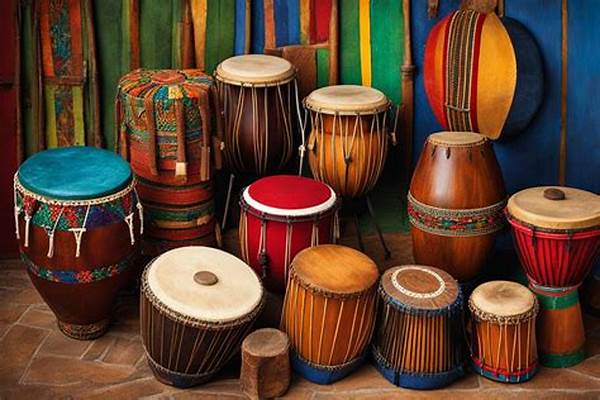When you think of Latin music, what comes to mind? Energetic dance floors, vibrant rhythms, and an infectious beat that resonates directly with the soul. Picture yourself at a salsa club where the atmosphere pulsates with energy and life. The secret behind this captivating rhythm is often the percussion instruments that form the backbone of Latin music. These instruments do more than just keep pace; they tell stories of cultures, traditions, and passion. In this article, we’ll explore the rich world of popular percussion instruments in Latin music and discover what makes them so irresistible. We’ll invite you to dive deep into this melodious journey, with insights, interviews, and fascinating anecdotes.
Read More : Basic Instruments For Physics Experiments In Schools
Latin music has taken the world by storm, from Carlos Santana’s electrifying performances to the ever-popular salsa, merengue, and reggaeton beats dominating playlists. But behind these global hits are the percussion instruments, often unsung heroes, that add layers and dimensions to each note. Join us as we unveil the magic of these instruments. Prepare to be educated, entertained, and maybe even inspired to pick up an instrument yourself! After all, who wouldn’t want to be a part of such an exhilarating experience?
The Heartbeat: Congas and Bongos
The Essence of Congas
Congas are perhaps the most recognized percussion instruments in Latin music. They are large, barrel-shaped drums that originated from African roots, made popular by their distinct sound. Traditionally, they are played in a pair or a set of three.
The rhythmic call of the conga is both emotional and persuasive. It evokes a sense of ancestral connection that many performers and listeners find deeply moving. In Latin music concerts, seeing a conguero (conga player) masterfully drumming with speed and precision is a sight to behold.
Bongos: The Dynamic Duo
Bongos feature prominently in Latin music with their high-pitched, sharp sounds. Consisting of two small, interconnected drums, bongos are often played with the fingers, providing a sharp, crisp beat that complements the deeper resonance of the conga.
In terms of marketing and storytelling, bongos sell the idea of spontaneity and fun. It’s a sound that urges you to dance, adding layers of excitement to any musical piece. They exemplify the phrase “small but mighty,” proving that size doesn’t always matter when it comes to making an impact.
Timbales: The Metronome of Latin Music
What Makes Timbales Unique?
Timbales diverge from the traditional drum structure. They are shallow, metal-framed drums that usually come in a pair, mounted on a stand. Known for their sharp clarity, they are a staple in salsa, mambo, and cha-cha-chá.
Timbales are akin to the metronome for many bands, providing a steady pulse and poking through melodies with unparalleled sharpness. This instrument isn’t just about keeping time—it’s about creating punctuations in the music that elevate it to new heights.
An Invitation to Experience Timbales
Think you’re ready to try your hand at an instrument? Timbales are an excellent starting point for aspiring percussionists looking to make their mark. With an exclusive community of passionate players and the myriad of online tutorials, diving into the world of timbales has never been more accessible or enticing.
Maracas and Claves: Rhythm in Your Hands
Maracas: More than Just a Shake
When you hear the rustle of maracas, you can’t help but imagine festive gatherings and carefree moments. These handheld instruments are filled with seeds or beads, and when shaken, they produce a sound that’s both rhythmic and joyful.
Read More : Music Instrument Innovations Merging Classical And Edm Genres
Claves: The Silent Leaders
Claves might seem simple—they’re just two wooden sticks—but their influence in Latin music is immense. They often serve as the rhythmic thread that holds a piece together, providing guidance for other musicians in an ensemble.
Unveiling Other Gems: Cowbells and Cajón
Cowbells: Urban Intrigue
Cowbells have transformed from their humble origins into leading components in many Latin ensembles. Their distinct ring slices through musical patterns, adding an urban edge to traditional tunes.
The Cajón: A Box of Surprises
Originating from Peru, the cajón is a box-shaped percussion instrument played by slapping its front or rear faces. It has recently gained popularity for its versatility and unique sound that complements a wide array of musical styles.
Conclusion: Embracing the Beat
Latin music is a vibrant tapestry woven together by diverse instruments, each contributing its unique color and texture. Whether you’re swayed by the slow, sensual cadence of a conga or the quick, playful tap of bongos, there’s no denying the powerful allure of these instruments. They bridge tradition and innovation, offering listeners a complex yet accessible auditory experience.
Discover and Play
Whatever your musical background, embracing Latin percussion instruments could open up a new world of rhythmic possibilities. With their rich history and undeniable presence, they encourage aspiring musicians to explore, create, and most importantly, enjoy the infectious energy they offer.
Our Final Thoughts
As we’ve explored, the heartbeat of Latin music lies in its percussion instruments, each a testament to the rich cultural forces at play. These instruments do far more than keep time—they invite listeners into a world where every beat tells a story, every sound resonates with history and emotion. Who wouldn’t want to be a part of that? Whether you’re a seasoned musician or someone newly captivated by Latin beats, there’s always more to discover, learn, and enjoy from the vibrant world of popular percussion instruments in Latin music.
